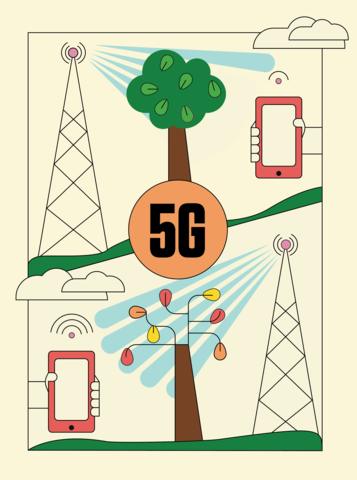
NIST researchers studied the effects of trees on millimeter waves, which are planned for use in 5G communication.
N. Hanacek/NIST
As 5G technology gets fully implemented over the next several years, cellphones and other wireless tech will grow more powerful with increased data flow and lower latency. But along with these benefits comes a question: Will your next-generation cellphone be unable to see the forest for the trees?
That's one way to describe the problem confronting cell network designers, who have to embrace both the benefits and shortcomings of a new class of signals that 5G will use: millimeter waves. Not only can these waves carry more information than conventional transmissions do, but they also usefully occupy a portion of the broadcast spectrum that communication technologies seldom use - a major concern in an age when broadcasters vie for portions of spectrum like prospectors staking out territory.
However, millimeter waves also have drawbacks, including their limited ability to penetrate obstacles. These obstacles include buildings, but also the trees that dot the landscape. Until recently little was known about how trees affected millimeter wave propagation. And just as few of us would want to imagine a landscape without greenery, few designers would be able to plan networks around it without such a crucial fundamental detail.
The National Institute of Standards and Technology (NIST) has set out to solve this problem by measuring trees' effect on millimeter waves. The effort could make a profound difference in our next-generation devices' ability to see the 5G antennae that may soon sprout.
The 5G era will feature wireless communication not only between people but also between devices connected to the Internet of Things. The increased demand for larger downloads by cell customers and lag-free network response by gamers has spurred the wireless industry to pursue speedier, more effective communication. Not only could our current devices and services work more effectively, but we could realize new ones: Autonomous vehicles will depend on such quick network response to function.
"We will be able to do new things if our machines can exchange and process information quickly and effectively," said Nada Golmie, head of NIST's Wireless Networks Division in the Communications Technology Laboratory. "But you need a good communication infrastructure. The idea is to connect, process data in one place and do things with it elsewhere."
Millimeter waves, which are new turf for the wireless industry, could be part of the solution. Their wave crests are just a few millimeters apart - a very short distance compared with radio waves that can be several meters long. And their frequencies are very high, somewhere between 30 and 300 gigahertz, or billion wave crests per second. Compared with conventional radio transmissions, which are in the kilohertz (for AM) and megahertz (for FM) ranges, new 5G signals will be very high frequency indeed - something like a bird tweeting at the upper range of human hearing compared with radio's deep, low bass.






